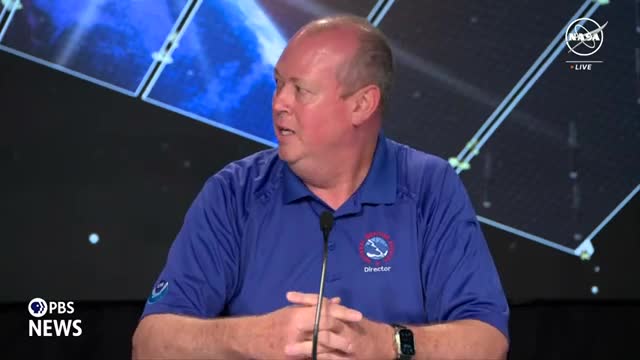Satellite technology revolutionizes storm tracking and safety

This article was created by AI summarizing key points discussed. AI makes mistakes, so for full details and context, please refer to the video of the full meeting. Please report any errors so we can fix them. Report an error »

In a recent government meeting, officials discussed the operational advancements and research capabilities of the GOES satellite system, highlighting its critical role in weather monitoring and emergency response. The conversation emphasized the importance of real-time data collection, which has proven vital in issuing timely warnings during severe weather events, such as the recent derecho that produced 100 mph winds and significant dust storms in Texas.
The GOES satellites, particularly the upcoming GOES R, are expected to enhance observational capabilities, allowing for one-minute scans of specific areas, which can capture critical moments like rocket launches. The panel expressed optimism that the GOES R would be utilized to monitor the launch of its successor, with a focus on capturing detailed imagery of the event.
Officials also addressed the technology's ability to distinguish between fog and clouds, which is crucial for preventing traffic accidents and ensuring safe navigation on waterways. The satellites are designed for a lifespan of approximately ten years, with some exceeding this duration and continuing to provide valuable data, including communication support for remote regions like Antarctica.
As the current GOES East satellite prepares for replacement, it will be repositioned to serve as a backup, ensuring continuous operational capability. The meeting concluded with a commitment to making all data from the GOES satellites freely available for public use, reinforcing the importance of transparency in environmental monitoring and research.
The GOES satellites, particularly the upcoming GOES R, are expected to enhance observational capabilities, allowing for one-minute scans of specific areas, which can capture critical moments like rocket launches. The panel expressed optimism that the GOES R would be utilized to monitor the launch of its successor, with a focus on capturing detailed imagery of the event.
Officials also addressed the technology's ability to distinguish between fog and clouds, which is crucial for preventing traffic accidents and ensuring safe navigation on waterways. The satellites are designed for a lifespan of approximately ten years, with some exceeding this duration and continuing to provide valuable data, including communication support for remote regions like Antarctica.
As the current GOES East satellite prepares for replacement, it will be repositioned to serve as a backup, ensuring continuous operational capability. The meeting concluded with a commitment to making all data from the GOES satellites freely available for public use, reinforcing the importance of transparency in environmental monitoring and research.
View full meeting
This article is based on a recent meeting—watch the full video and explore the complete transcript for deeper insights into the discussion.
View full meeting